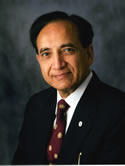Guideline familiarity predicts variation in self-reported use of routine surveillance PET/CT by physicians who treat head and neck cancer Journal Article
| Authors: | Roman, B. R.; Patel, S. G.; Wang, M. B.; Pou, A. M.; Holsinger, F. C.; Myssiorek, D.; Goldenberg, D.; Swisher-McClure, S.; Lin, A.; Shah, J. P.; Shea, J. A. |
| Article Title: | Guideline familiarity predicts variation in self-reported use of routine surveillance PET/CT by physicians who treat head and neck cancer |
| Abstract: | Background: Use of routine surveillance testing beyond guideline recommended levels is common in many oncologic disciplines, including head and neck cancer. The impact of guideline familiarity and other physician characteristics on surveillance imaging use are not well understood. Methods: A cross-sectional national survey was performed of physicians responsible for surveillance of patients with head and neck squamous cell carcinoma (HNSCC). The primary outcome was self-reported use of routine surveillance PET/CT in asymptomatic patients. A secondary outcome was familiarity with guideline recommendations. Using multivariable regression, the impact of guideline familiarity and other physician characteristics on PET/CT use was examined. Results: Of the 502 responders, 79% endorsed ever using PET/ CT scans for routine surveillance imaging, and 39% were high imaging users (used PET/CT scans on more than half of their asymptomatic patients); 76% were familiar with the NCCN Clinical Practice Guidelines in Oncology for Head and Neck Cancers recommending against routine surveillance PET/CT scans. Although guideline familiarity was associated with being a low imaging user or a never-user, among those who were familiar with guidelines, 31% were nonetheless high imaging users and 73% endorsed ever using PET/CT scans. In multivariable analysis controlling for physician characteristics, guideline familiarity was the strongest predictor of PET/CT use. Conclusions: Familiarity with the NCCN Guidelines predicts self-reported routine surveillance PET/CT use among physicians who treat patients with HNSCC. However, given the observed variation and high levels of imaging even among physicians who are familiar with the guidelines, further research should examine the reasons physicians choose to use surveillance PET/CT scans. |
| Keywords: | adult; middle aged; nuclear magnetic resonance imaging; sensitivity analysis; computer assisted tomography; practice guideline; self report; surgeon; computer assisted emission tomography; medical practice; cross-sectional study; physician attitude; normal human; head and neck squamous cell carcinoma; health care survey; private practice; asymptomatic disease; human; male; female; article; radiation oncologist |
| Journal Title: | Journal of the National Comprehensive Cancer Network |
| Volume: | 13 |
| Issue: | 1 |
| ISSN: | 1540-1405 |
| Publisher: | Harborside Press |
| Date Published: | 2015-01-01 |
| Start Page: | 69 |
| End Page: | 77 |
| Language: | English |
| PROVIDER: | scopus |
| PUBMED: | 25583771 |
| DOI/URL: | |
| Notes: | Export Date: 2 March 2015 -- Source: Scopus |
Citation Impact
Related MSK Work





